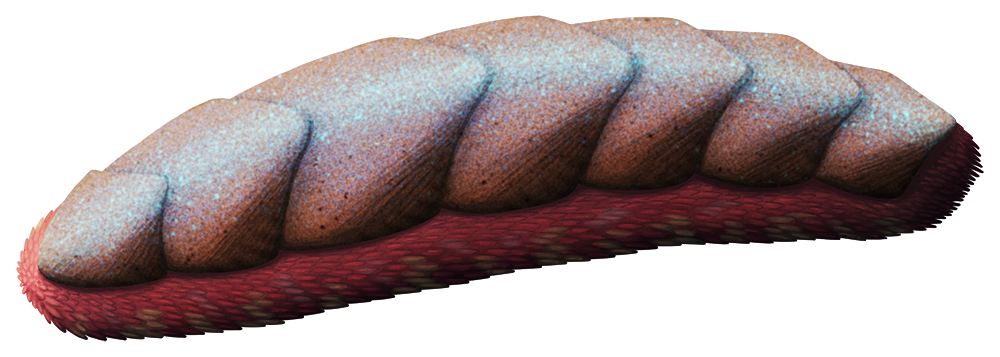Kulindroplax perissokomos, a mollusc from the mid-Silurian of England (~428-423 mya).
About 4cm long (1.6″), it had a wormlike body covered in spicules (tiny spines) which suggests it was a member of the aplacophoran molluscs – but it also had a row of seven larger shells along its back resembling those of chitons.
Modern aplacophorans are all shell-less and were traditionally thought to be a very early branch of the mollusc lineage that retained a “primitive” ancestral body plan. More recently, however, a combination of genetic evidence and fossil discoveries of animals like Kulindroplax have revealed that they’re actually close relatives of the chitons and instead lost their shells much more recently during the course of their evolution.

